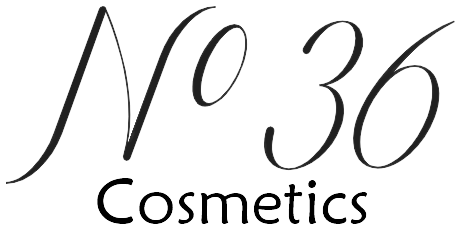Does Turmeric, Lemon, and Kojic Acid Soap Really Work? The Science Behind the Hype
Brightening soaps infused with turmeric, lemon, and kojic acid flood social media feeds, promising glowing, even-toned skin. But do these ingredients truly deliver, or is it just clever marketing? Let’s dissect the science, traditional uses, and real-world results to uncover whether this trinity lives up to its viral fame.
The Rise of Brightening Soaps: Why These Ingredients?
Turmeric, lemon, and kojic acid are celebrated in skincare for their purported ability to tackle hyperpigmentation, acne scars, and dullness. But their efficacy depends on formulation, concentration, and skin type. Here’s a breakdown of each component:
1. Turmeric: The Golden Anti-Inflammatory
Traditional Use: A staple in Ayurveda for centuries, turmeric treats inflammation, wounds, and skin infections.
Science Says:
- Curcumin: Its active compound has antioxidant and anti-inflammatory properties, proven to reduce acne and redness (Journal of Cosmetic Dermatology, 2016).
- Limitations: Poor skin absorption in raw form. Soap’s short contact time may limit benefits.
In Soap: Adds a subtle glow but works best in leave-on products like serums.
2. Lemon: Nature’s Exfoliant
Traditional Use: Used to brighten skin and fade dark spots due to its high vitamin C and citric acid content.
Science Says:
- Vitamin C: Boosts collagen and inhibits melanin production.
- Citric Acid: An AHA that exfoliates dead skin cells.
- Risks: Highly acidic (pH 2–3). Can irritate sensitive skin or cause photosensitivity.
In Soap: May offer mild exfoliation but risks over-drying or sun sensitivity.
3. Kojic Acid: The Pigmentation Fighter
Traditional Use: Derived from fungi, it’s a Japanese staple for treating age spots and melasma.
Science Says:
- Melanin Inhibition: Blocks tyrosinase, the enzyme responsible for pigmentation (Dermatologic Surgery, 2020).
- Effectiveness: Studies show it outperforms hydroquinone for some users but works slower (results in 8–12 weeks).
In Soap: Requires consistent use. Higher concentrations (1–2%) in cleansers show moderate efficacy.
How These Soaps Might Work
- Surface Exfoliation: Lemon’s AHAs slough off dead cells, letting kojic acid penetrate better.
- Antioxidant Boost: Turmeric neutralizes free radicals from pollution/UV exposure.
- Pigment Fading: Kojic acid interrupts melanin production over time.
But There’s a Catch:
- Short Contact Time: Soap rinses off quickly, reducing ingredient efficacy.
- Concentration Matters: Many commercial soaps use low doses to avoid irritation.
- Skin Barrier Impact: Overuse can strip natural oils, worsening dryness or sensitivity.
What Do Studies Say About Brightening Soaps?
- A 2021 International Journal of Dermatology review found kojic acid in wash-off products (like soap) has mild to moderate effects compared to leave-on creams.
- Turmeric in cleansers showed anti-acne benefits in a 2020 study but minimal impact on pigmentation.
- Lemon’s efficacy in soap is largely anecdotal; no robust studies confirm brightening claims.
Real User Experiences: The Good, Bad, and Ugly
Positive Reviews:
- “Faded my sunspots after 3 months!” – User on Reddit’s r/Skincare Addiction.
- “Calms my acne without drying.” – Amazon reviewer.
Complaints:
- “Left my skin red and flaky.” – Sensitive-skinned user.
- “No change in dark elbows.” – Disappointed TikTok buyer.
Potential Side Effects
- Irritation: Kojic acid and lemon can cause redness, especially for sensitive skin.
- Photosensitivity: Lemon increases sunburn risk—SPF is a must.
- Staining: Turmeric may temporarily tint pale skin or towels yellow.
Expert Opinions
- Dr. Hadley King, Board-Certified Dermatologist: “Kojic acid is effective but works best in serums. Soaps are a weaker delivery method.”
- Dr. Vanita Rattan, Cosmetic Formulator: “Lemon in soap is risky. Opt for stabilized vitamin C instead.”
The Verdict
These soaps can offer mild brightening and antibacterial benefits, but they’re not miracle workers. Manage expectations:
- Best For: Mild pigmentation, acne-prone or oily skin.
- Not For: Deep melasma, sensitive/dry skin, or quick fixes.
Pro Tip: Pair with a kojic acid serum and sunscreen for better results.
FAQs
Q: Can turmeric soap cure acne?
A: It may reduce inflammation but won’t replace acne treatments like salicylic acid.
Q: How long until I see results?
A: 4–12 weeks, depending on pigmentation depth.
Q: Are these soaps safe daily?
A: Limit to 2–3 times weekly to avoid irritation.
Q: Do they lighten skin permanently?
A: No—pigmentation returns if you stop use or skip sunscreen.
Final Thought
While turmeric, lemon, and kojic acid soaps aren’t magic, they can be a supportive step in a broader skincare routine. For stronger results, consider professional treatments like chemical peels or laser therapy.
#SkincareScience #NaturalBrightening #DermatologistApproved
